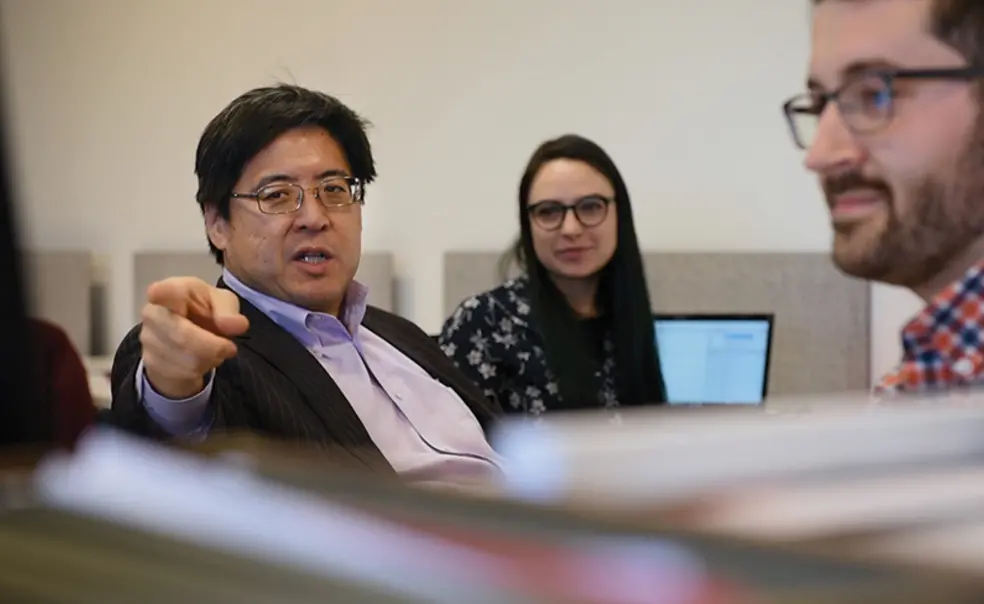Professor Sam Wang’s Election Data Gives Voters a Leg Up
Sam Wang, a professor of neuroscience, acknowledges defects in the U.S. electoral process, but rather than growing discouraged, he feels optimistic.
“I’m the person who shows up at a dilapidated house and just says, ‘Oh, this place has so much potential,’” he says with a laugh. “And so, I’m like that about democracy.”
Though his research at Princeton focuses on how the brain learns and interprets, two decades ago, Wang took a special interest in elections, and in particular, the power voters have to decide winning candidates and ballot initiatives through not only votes, but also donations and volunteering. In 2020, he co-founded the Electoral Innovation Lab, a nonpartisan research body unaffiliated with the University that aims to provide the public with easy-to-understand and applicable electoral science tools.
This August, the lab launched Vote Maximizer, a web app that combines ballot information with campaigning efforts to identify key elections and ballot questions. The goal is to calculate voter power, which Wang says is quantifiable, to move the probability of outcomes across races, including presidential, Congressional, and state races. Since a few votes can move the balance of power nationally, a voter who doesn’t live in a location with a tight race could choose to donate to or volunteer in other key races. The closer the race and the smaller the population, the more power a voter has.
For instance, as of early September, Wang says the key Senate races this year will be in Montana, Florida, and possibly Nebraska, but he sees competitive races for the House all over the country. For the presidential election, Nevada showed the highest possible voting power at 100, followed by Arizona and Virginia with 76 each, and North Carolina with 75.
Wang explains that his scientific background inspired him to realize that the application of statistical analysis and modeling can help people understand where their resources are best deployed.
Voter power is something Wang’s been passionate about since becoming one of the first poll aggregators in 2004 after noticing that news coverage tended to report the results of one poll at a time, which was “like looking at a graph one data point at a time, and no scientist would ever do that,” says Wang, who has since seen improvement in data-driven coverage. At the same time, voter margins for presidential elections became much smaller, starting with the infamous Bush-Gore recount in 2000, in which 537 highly-contested votes in Florida ultimately tipped the election in President George W. Bush’s favor.
Though the public’s focus is currently on the presidential race, Wang is looking ahead and taking note of the “ways in which democracy is a little rickety [and] could use a little improvement.”
He predicts that “conditions are ripe for some kind of major change” to our national electoral system as it currently “makes it very hard for the whole range of opinion to be reflected in the people who we elect.”
He points to the fact that the nation’s two biggest parties are growing further and further apart politically and that a Gallup poll released in January showed that U.S. adults who identify as independents (43% of respondents) far outnumber registered Republicans and Democrats (both of which came in at 27% of respondents).
Wang concedes change may not necessarily be for the better, but he remains optimistic thanks to the data he aggregates, which helps him focus on “what needs attention. I see where voters can put their efforts to get out the vote and make a difference. … So, I would say it’s optimism tempered by the fact that repairing democracy is actually a lot of work.”
He estimates the next decade will be crucial in determining the direction of our nation’s political future and emphasizes that “voters have a say in that. And … resources like Vote Maximizer can help people identify where they have the most leverage.”












No responses yet